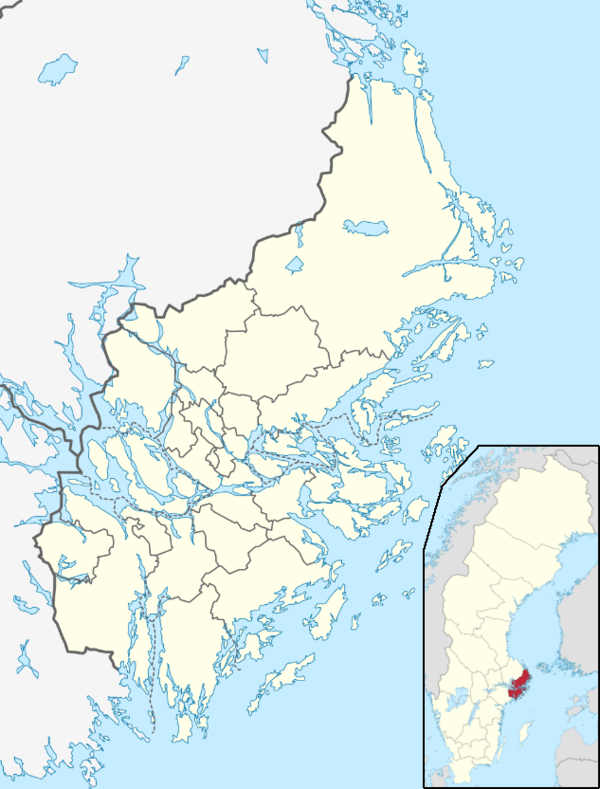Football in Stockholm

Football in Stockholm organises about 60,000 players[1] and is governed by Stockholm Football Association since 1917. Stockholm has several of Sweden's leading football clubs, and the city is home to 39 teams in the national league system and more than 100 amateur leagues regulated by the Stockholm Football Association. At the moment there are three Stockholm teams in the first-tier Allsvenskan, five in the second-tier Superettan, four in the third-tier Division 1.
Stockholm's most successful teams are AIK and Djurgårdens IF, with eleven national championships. AIK played their first national championship final in 1898 Svenska Mästerskapet.[2]
Friends Arena in Solna, is the national stadium of Sweden national football team and the greatest stadium in the country.
History

.jpg)
AIK started a football department in 1896 and played in the 1898 Svenska Mästerskapet final, which they lost to Örgryte IS of Gothenburg.[3] In 1899, AIK played Djurgårdens IF, in their first match, which ended 2–1 to AIK on Ladugårdsgärdet.[4] Their rivalry later became Tvillingderbyt.
Football in Stockholm was early organised into leagues and in the 1902 season AIK, AIK II, Djurgårdens IF, IF Sleipner, IF Swithiod, Norrmalms SK, and Östermalms SK played in the Svenska Bollspelsförbundets första serie that Djurgården won.[5]
In the 1924–25 season, AIK and Hammarby IF participated in the first Allsvenskan. Later also Westermalms IF (debut in 1926–27), Djurgårdens IF (debut in 1927–28), Reymersholms IK (debut in 1941–42), Assyriska Föreningen (debut in 2005), IF Brommapojkarna (debut in 2007) and Syrianska FC (debut in 2011) have participated in Allsvenskan.
In 2001, three Stockholm teams ended top-three in Swedish top-tier Allsvenskan, Hammarby IF won, Djurgårdens IF Fotboll finished second and AIK finished third.
Teams
Most successful teams
| Team | Swedish champions | Svenska Cupen | Supercupen | Domestic total |
|---|---|---|---|---|
| AIK | 11 | 8 | 1 | 19 |
| Djurgårdens IF | 11 | 4 | 0 | 15 |
| Hammarby IF | 1 | 0 | 0 | 1 |
Notes
References
- ↑ http://www.stff.se/om-stff/fakta/
- ↑ Alsiö, Martin; Frantz, Alf; Lindahl, Jimmy; et al., eds. (2004). 100 år: Svenska fotbollförbundets jubileumsbok 1904-2004, del 2: statistiken. Vällingby: Stroemberg Media Group. ISBN 91-86184-59-8.
- ↑ Cederquist, Jonas (2010). Stockholms fotbollshistoria 1880–2010 [History of Football in Stockholm 1880–2010] (in Swedish). Stockholmia förlag. ISBN 978-91-7031-222-9.
- ↑ Cederquist, Jonas (2010). Stockholms fotbollshistoria 1880–2010 [History of Football in Stockholm 1880–2010] (in Swedish). Stockholmia förlag. ISBN 978-91-7031-222-9.
- ↑ Cederquist, Jonas (2010). Stockholms fotbollshistoria 1880–2010 [History of Football in Stockholm 1880–2010] (in Swedish). Stockholmia förlag. ISBN 978-91-7031-222-9.